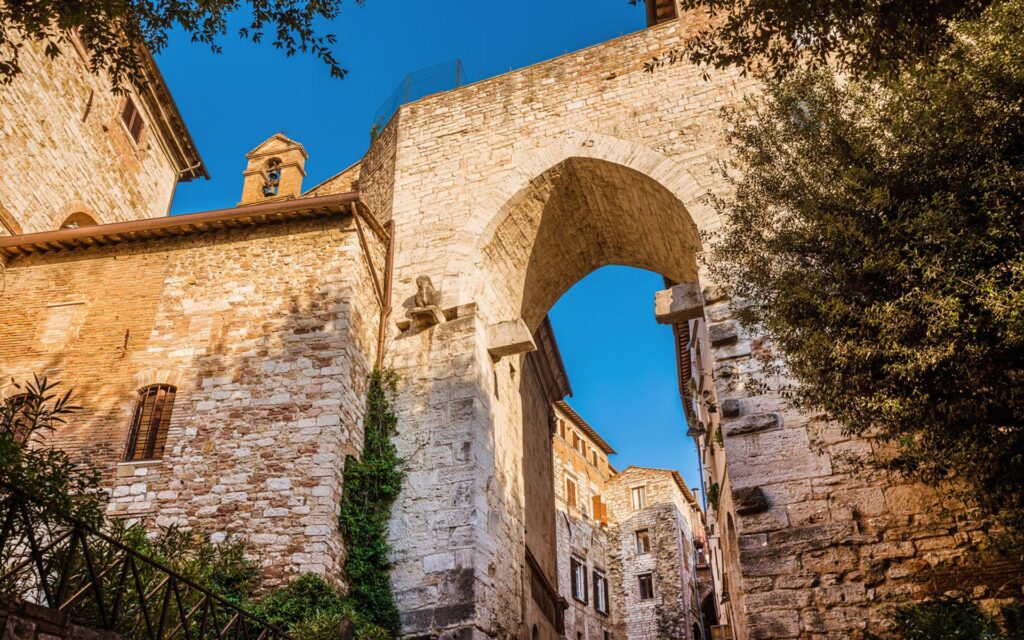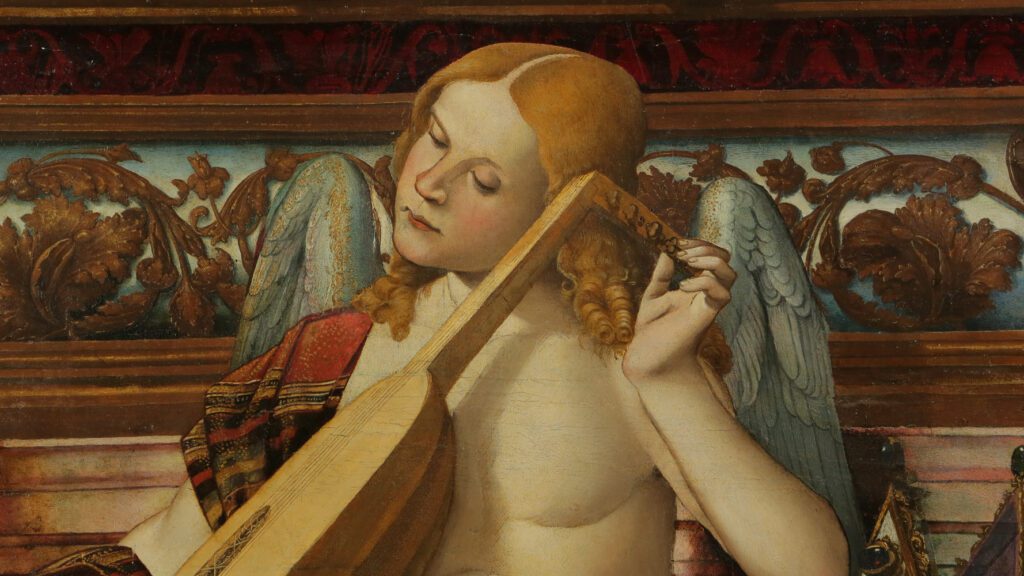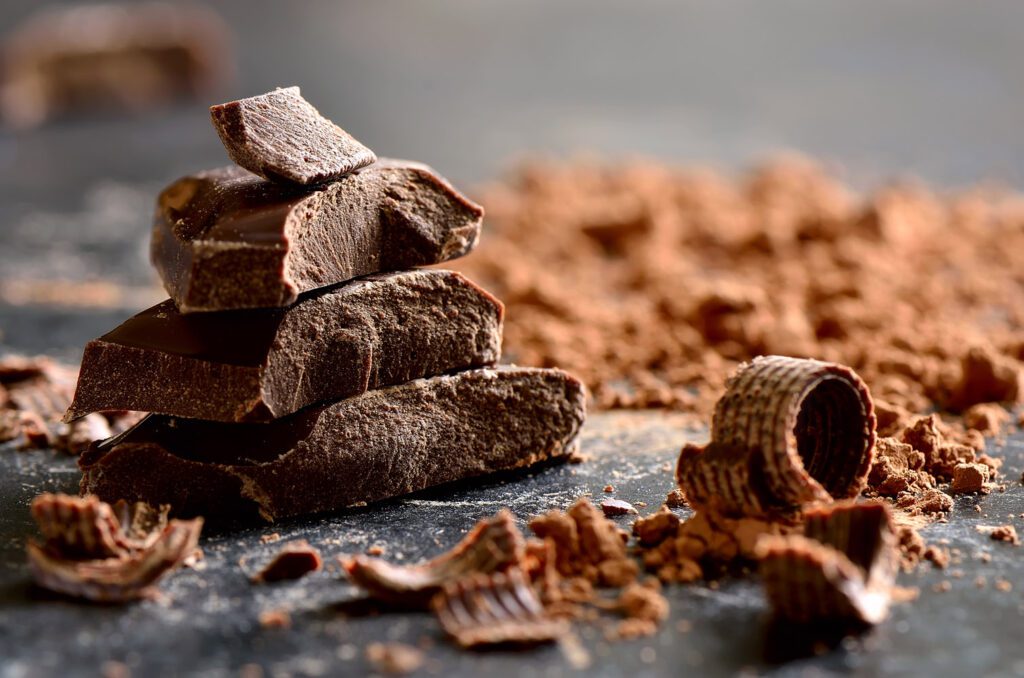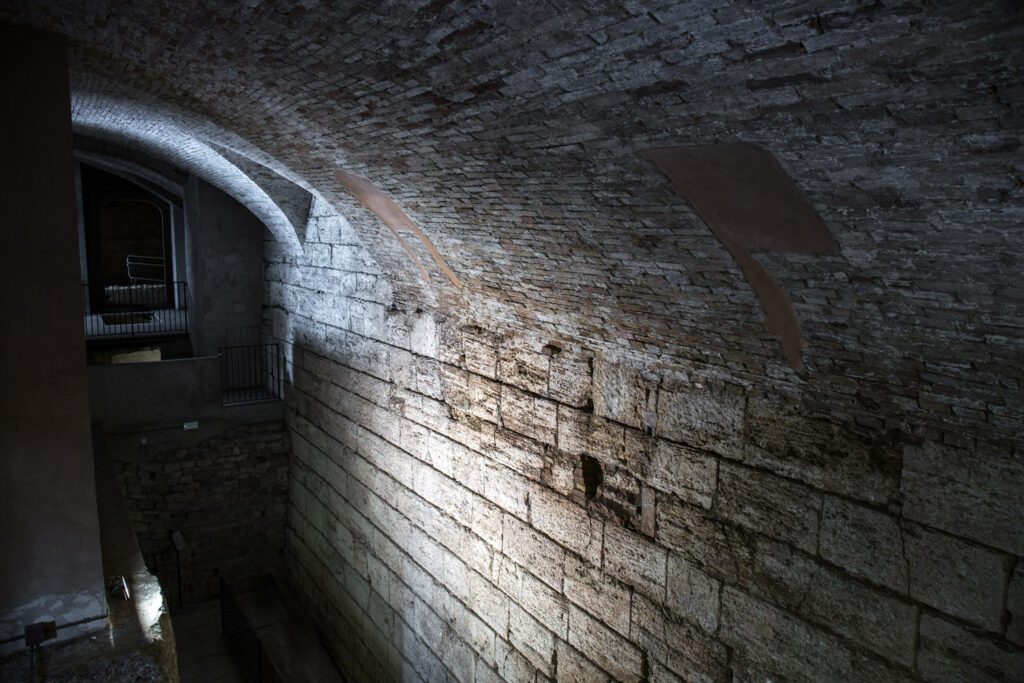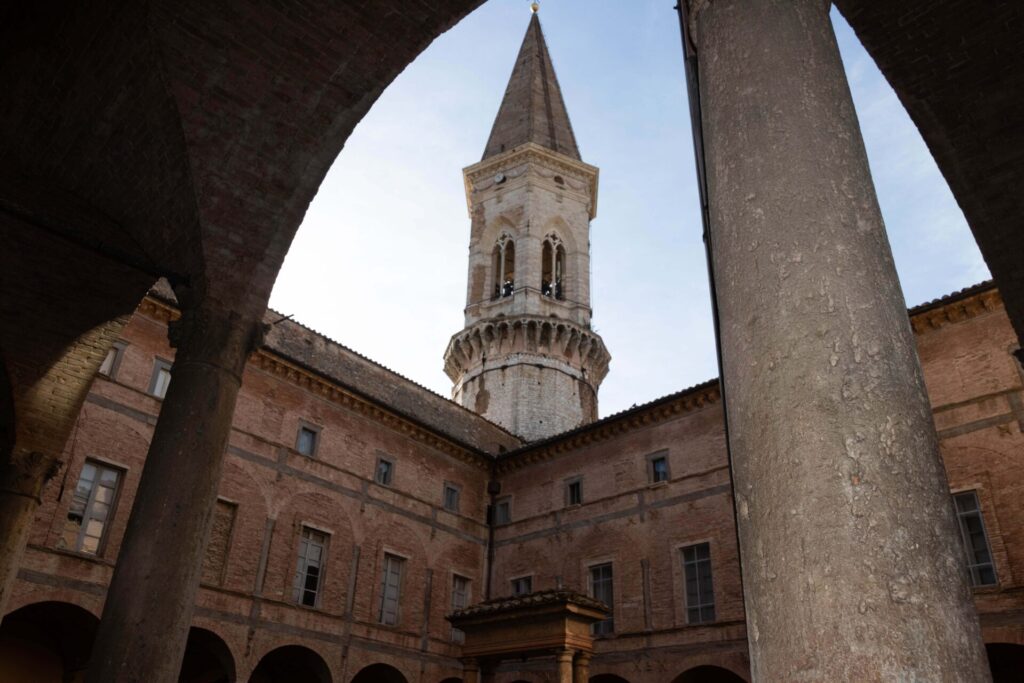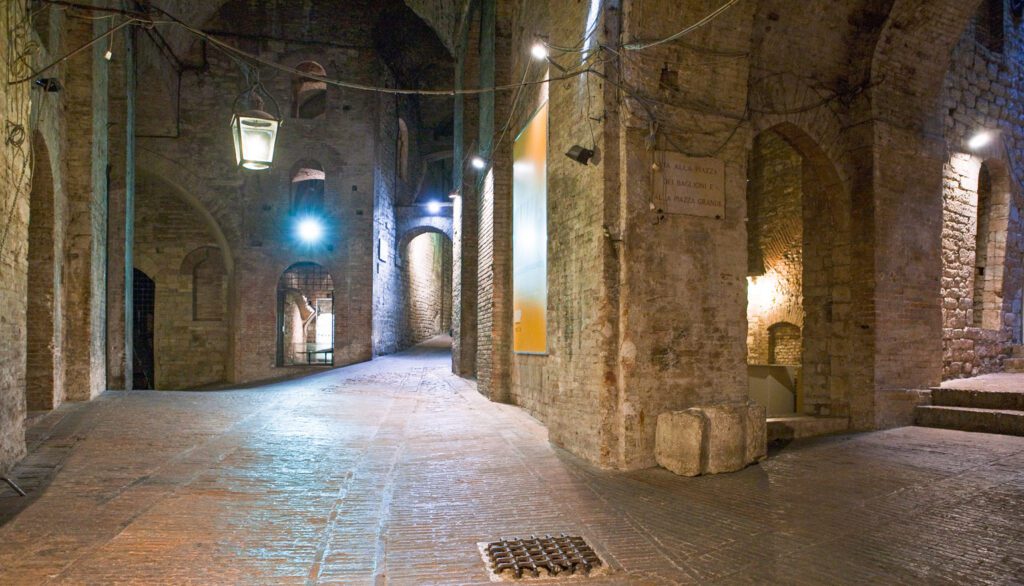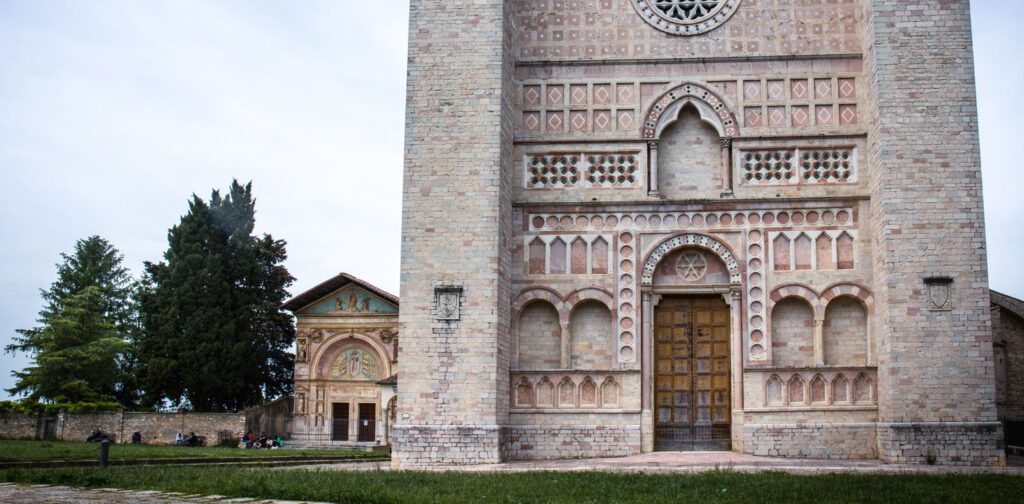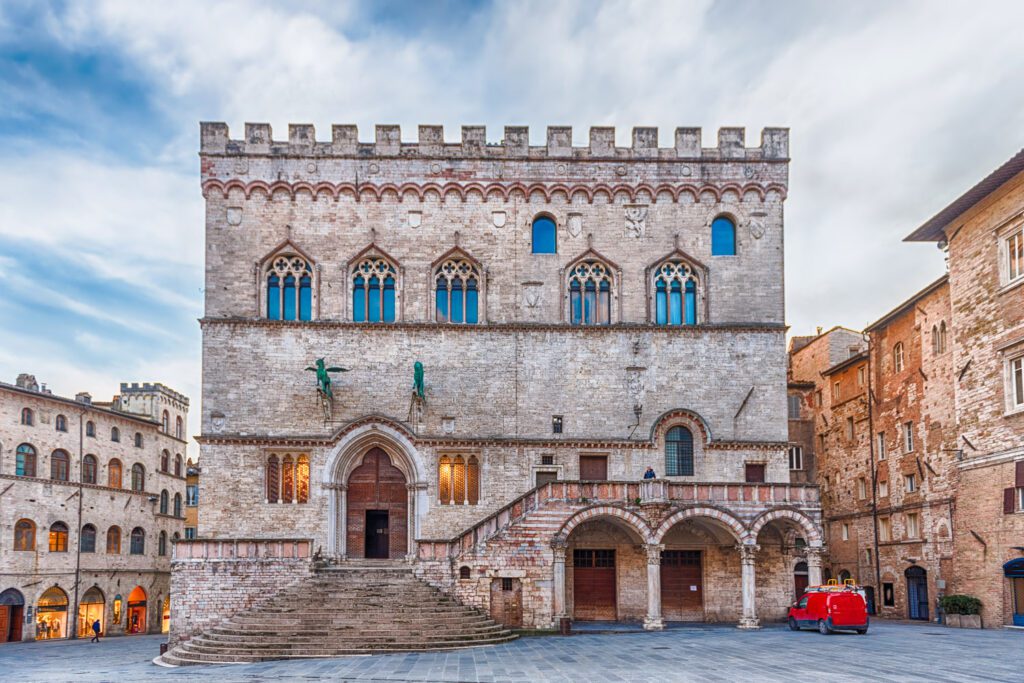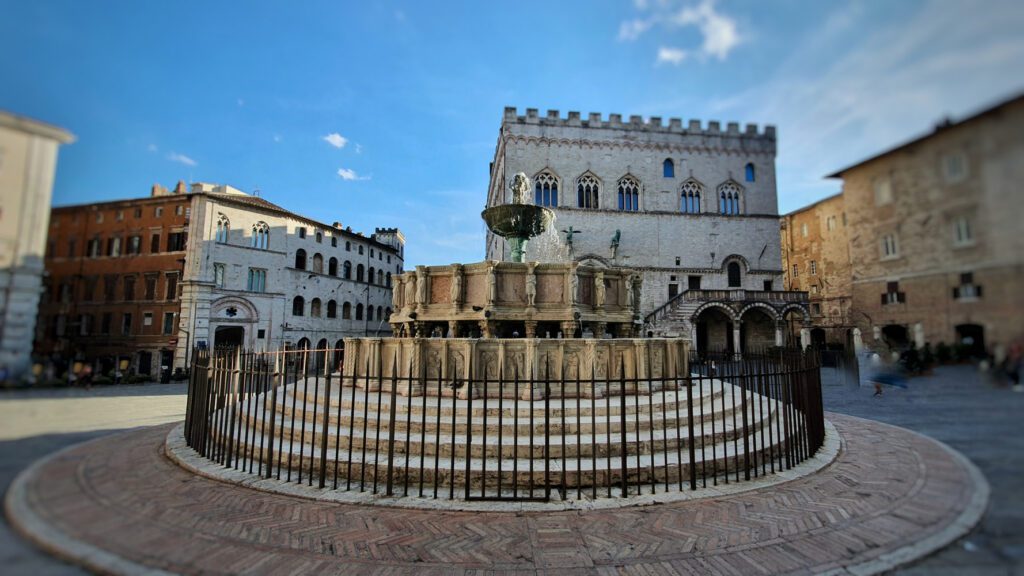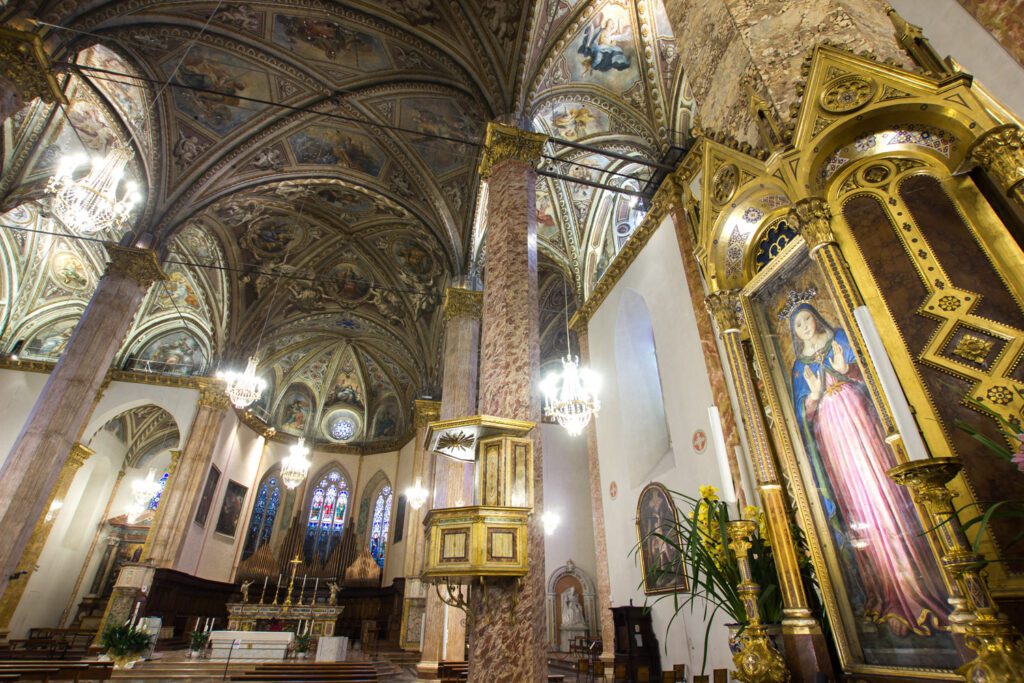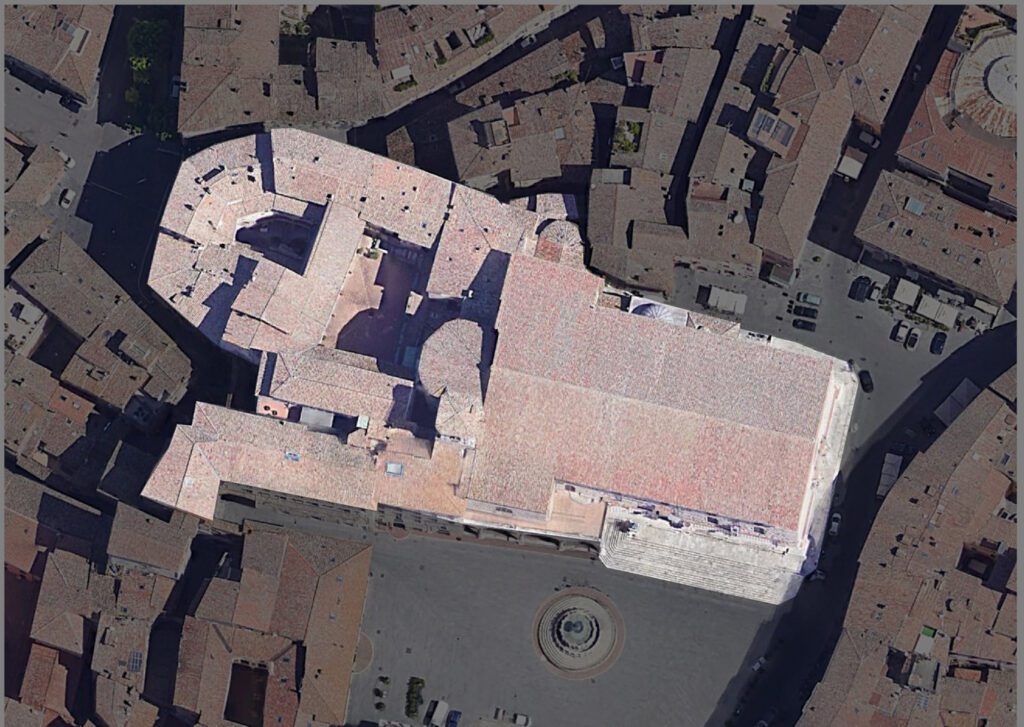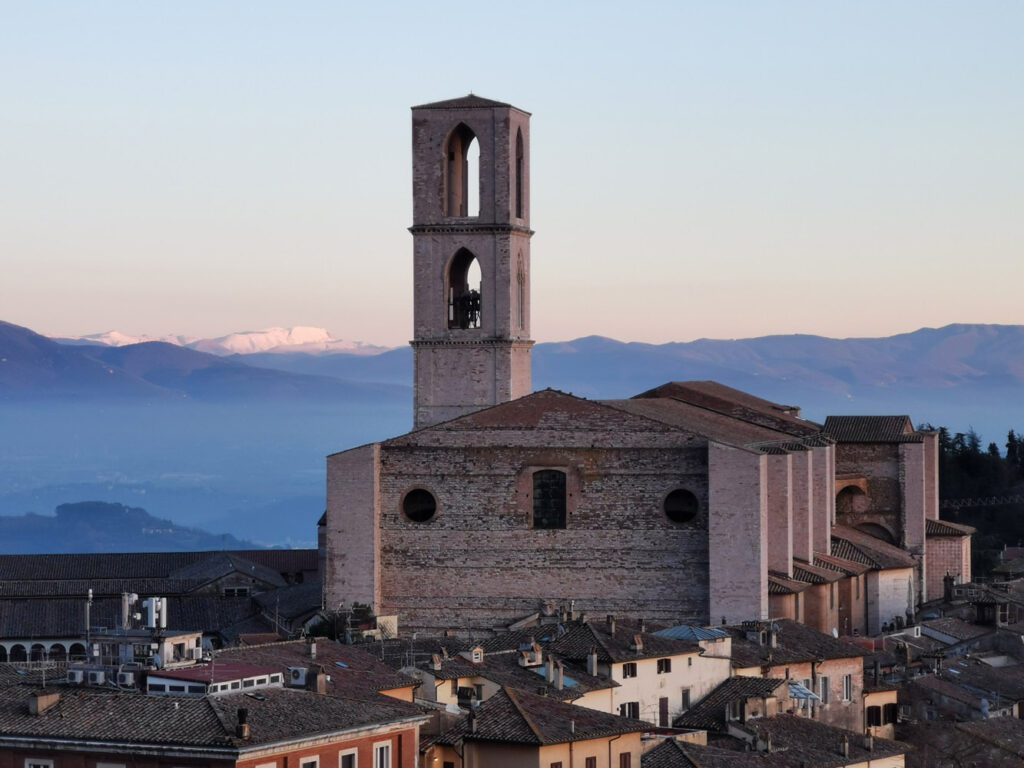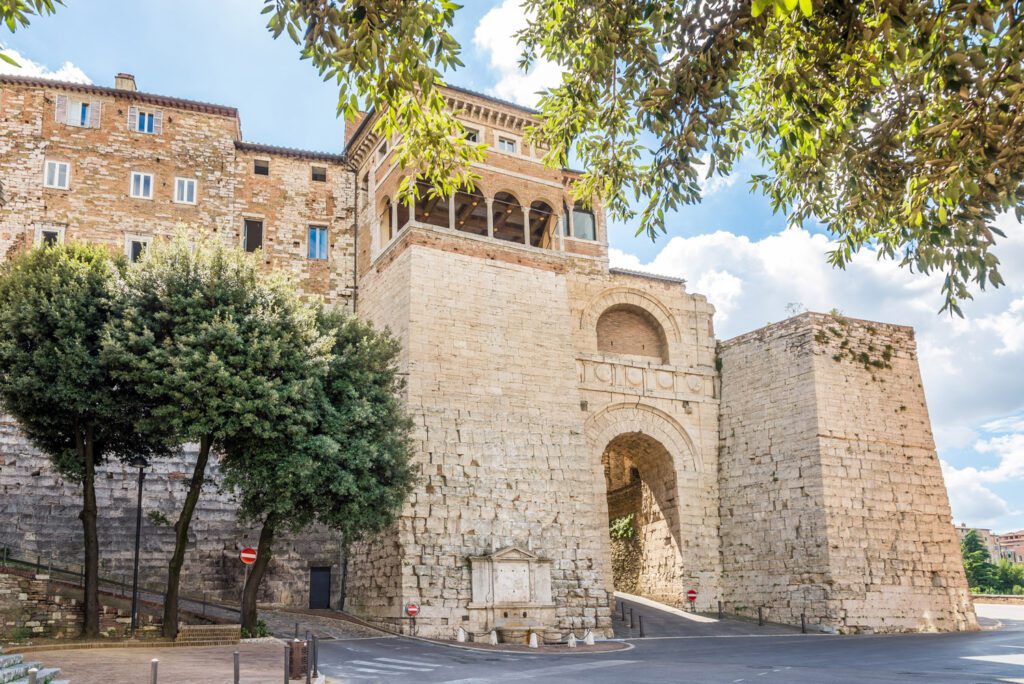Perugia, the Regional County Seat of Umbria, is a town definitely worth discovering for the magnificence of its streets, squares, fountains, as well as the snaky alleys reaching far beyond the Corso, i.e. Main Street, named after Pietro Vannucci, the painter who is universally known as Perugino. At both ends of Main Street rise the highest urban areas: Colle del Sole (Sun Hill), where you will enjoy a breathtaking view on the town walls (some 9 km / 5.5 miles long, partly overlapping with the Etruscan walls); and Colle Landone, now turned into Carducci Park (Giardini), overlooking the Medieval quarters, and landscapes that the sunset will paint in rich hues of red. The relevant difference in height (493 meters, some 1,500 feet) between the hill zone and the plain has been overcome by works of engineering like escalators and elevators, embedded in an environment of great historical significance.
First founded by the Ancient Umbrians, in the sixth century BC Perugia became one of the Etruscan “Twelve Cities,” then was finally defeated by the Roman troops of Octavian Augustus. The sign of his victory, the words Augusta Perusia, can still be seen on top of the Etruscan Arch, amazingly well preserved and recently restored.
Piazza IV Novembre (from November 4, 1918, the end of WWI), the main square, is a gem still enclosing its original Medieval monuments, such as the Great Fountain, the Palace of Priors with its Sala dei Notari, (Hall of Notaries), Saint Lawrence's Cathedral, and the Loggia of Braccio. But the “Great Square,” as it was once called, also hides treasures that cannot be discovered on the surface. From the Chapter Museum of the Cathedral, in fact, you may go down and see Perugia underground: through a maze of passages, the tour crosses the centuries, telling us about Etruscans, Romans, Byzantines, as well as Late Antiquity and the Middle Ages. Other impressive underground places are the Rocca Paolina, the remains of a fortress willed by Pope Paul III in the mid-16th century in order to fully and forcibly incorporate Perugia in the Papal States; and the Etruscan Well.
We would have a hard time trying to sum up all the places worth a visit in the old “acropolis,” the upper area of the town. We cannot at least forget the Galleria Nazionale dell'Umbria (National Art Gallery in Umbria), the Collegio della Mercanzia (College of Merchants), and the Collegio del Cambio (College of Money Changers) with its frescoes by Perugino.
Little shops of top quality will allow the visitors to have a break in their tours. You will be able to taste the typical torta al testo, sort of a flat bread cake (testo being a special pan), that can be filled with the natural products of Umbria; or, have some porchetta, slices of roast pork; freshly-made cream; chocolate, made by prestigious pastry-making workshops that are part and parcel of Perugia's history. A story that can be read and seen and even directly experienced at the Perugina Museum, just off downtown.
By making a detour in the borghi (quarters), you may choose among many monumental churches: San Domenico (Saint Dominique) with a Gothic window of the 14th century, that is one of the biggest specimens in Italy; San Pietro (Saint Peter), the first Benedictine monastery in Perugia, with three cloisters, an “educational garden” of medicinal herbs, and precious paintings in the different areas of the complex; the Oratorio di San Bernardino (Saint Bernardine's Oratory, in the original sense of a “place where to pray”), whose façade in rosy stone, finely embellished with azurite and malachite, has a many-colored Renaissance gate by Agostino di Duccio. Adjoining it, the Church of San Francesco al Prato (Saint Francis' Church next to a Lawn), the second-ever building worldwide dedicated to the Assisi Saint. Currently, after many restorations, it houses the Auditorium of Music, and can be also used for cultural events.
Perugia, in fact, following its calling as a cosmopolitan town, keeps organizing cultural events of international scope, that periodically put it to the forefront: Umbria Jazz (July), the Sagra Musicale Umbra, a festival of sacred music, and more (September); Eurochocolate (October); the International Festival of Journalism (April), and so on.
Having a look at Perugia from above will add fantastic experiences and “visions.” It can be done on top of Torre degli Sciri (Tower of the Barefoot, scalzi in current Italian), a quadrangular building of the 13th century; or on top of the Cathedral's terrace; or the Càssero, a castle-like building at the town gate named Porta Sant'Angelo after Saint Michael. Next to it, see the fascinating Tempietto, the “little temple,” as the people here call it because of its round shape that recalls pagan shrines – actually, the Church of Saint Michael Archangel.
A few hours in Perugia will clearly not suffice, it will take whole days to enjoy all of these marvels. To linger before Beauty is the true charm, true relax: please give it all the time it deserves!
What to see in Perugia
Walking Tour Perugia
The Museo del Capitolo – Perugia
Chocolate in Perugia
Perugia Underground – The Archaeological Area
Saint Peter’s Abbey
The Rocca Paolina – Perugia
San Francesco al Prato, San Bernardino (Churches)
The Palace of Priors
A Fountain for an Aqueduct
The Cathedral of Saint Lawrence
The Saint Lawrence “Island” – Perugia
The Old Town Center – Perugia
The Etruscan Arch, the Town Walls




